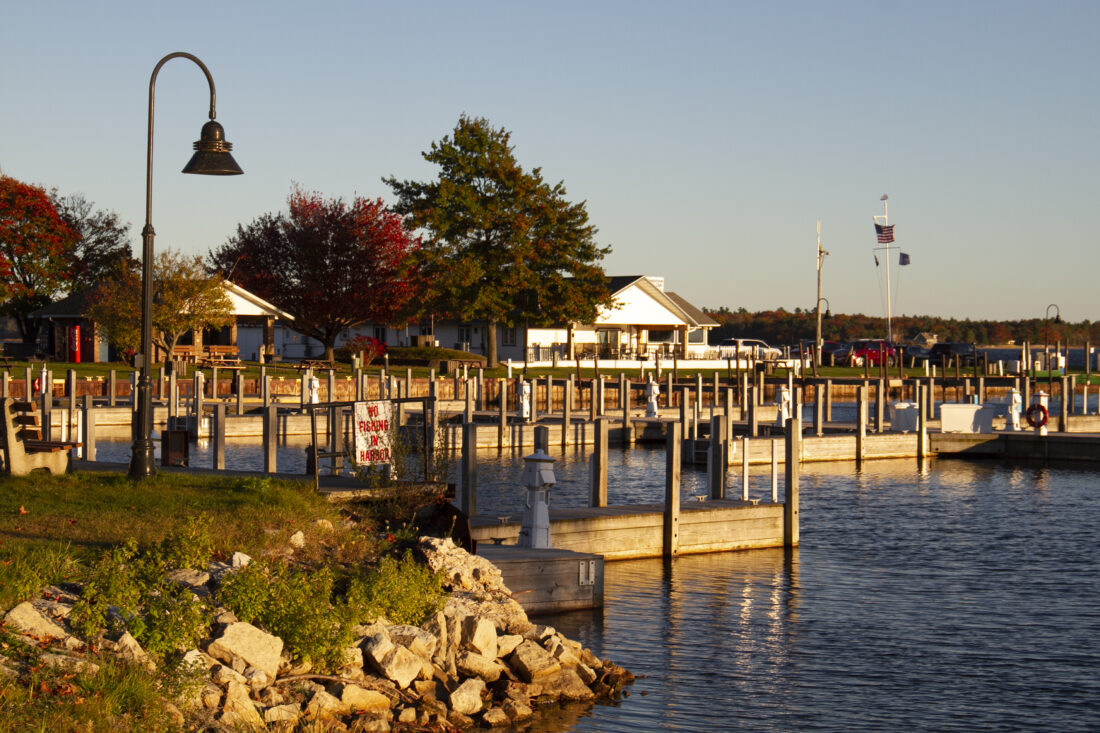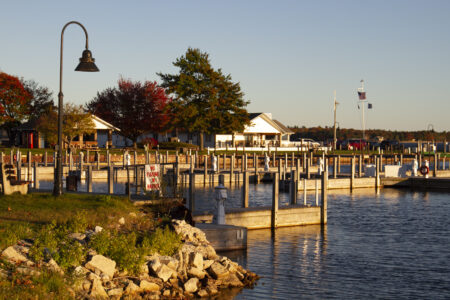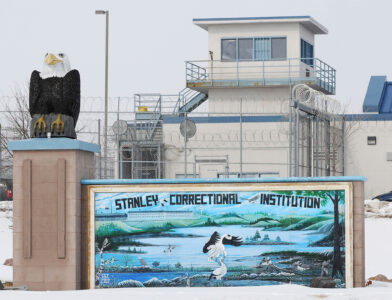Gladstone adopts new municipal harbor rates
Seasonal and transient fees increase by 10%
- The Gladstone Municipal Harbor is shown empty Tuesday, in the off-season. Boaters who return next year will be paying higher rates here and at other Michigan marinas. (R. R. Branstrom | Daily Press)
- The Michigan Waterways Commission has set new rates for docking fees.

The Gladstone Municipal Harbor is shown empty Tuesday, in the off-season. Boaters who return next year will be paying higher rates here and at other Michigan marinas. (R. R. Branstrom | Daily Press)
GLADSTONE — Rates for boaters at the Gladstone Municipal Harbor and others throughout Michigan are prepared to increase by about 10% next year.
As a state aid harbor, Gladstone, like neighboring Escanaba, is required to report to the State of Michigan Department of Natural Resources, whose Waterways Commission recommended the new rates.
The State of Michigan created the Waterways Commission in 1947 with the goal of creating a “marine highway” along the 3,000 miles of Great Lakes shoreline. The commission’s Great Lakes Harbors Program sought to develop harbors so boaters would never be more than 15 shoreline miles from refuge.
“From 1947 to 1964, the Waterways Commission developed 83 harbors of refuge, enabling tens of thousands of boaters to encircle Michigan using safe harbors and overnight hospitality,” reports the Michigan Harbor Guide.
Though both Gladstone’s and Escanaba’s harbors predate the commission, they contribute to the chain of safe harbors, and both are eligible to receive state aid. The Waterways Commission produces a list of rates harbors should use; prices vary for different harbors based on amenities, such as showers, fuel options, etc.

The Michigan Waterways Commission has set new rates for docking fees.
Both Gladstone and Escanaba fall into the same rate category.
The guidance is to make sure Michigan marinas are staying profitable enough to maintain facilities and remain open. Funds accrued through docking fees go to the city for harbor maintenance and improvement.
“They want you to show them that you can operate it like a business,” said Gladstone City Manager Eric Buckman when the proposed rates for 2026 came before the City Commission on Monday night.
Fees for people who dock at a designated slip for a whole season as well as daily rates for transient boaters passing through are both rising by about 10%. In Gladstone, that means a boat that paid $1,830 for a 30-foot slip for the 2025 season would pay $2,013 for the same slip next year. Costs range based on the length of the slip for seasonals and the length of the boat for transients.
While 10% may seem like a large jump, the Waterways Commission hadn’t adjusted the base prices for slips since 2013.
“This is the first significant change to both rate schedules in over 10 years, so we recognize that staffing, utilities, and supplies have all risen during this time,” Jason Fleming, resource management section chief with the Parks and Recreation Division of the DNR, wrote in a letter sent July 30.
Gladstone Parks and Recreation Director Wendy Taavola informed the commission that the harbor in Gladstone not only saw full occupancy of its 38 spaces this year but there is also a wait list.
The Gladstone City Commission unanimously voted to adopt the proposed rates from the Waterways Commission for 2026.
Escanaba’s Harbor Advisory Committee similarly voted to adopt the Michigan Waterways rates, though Harbor Master and Recreation Director Kim Peterson noted the new fees won’t officially be set until Escanaba City Council approves the budget early next year.
Commissioners on Monday also heard an audit presentation from Anderson, Tackman & Company PLC. The city is “clean,” auditor Kathleen Ciantar reported.
“Basically, that means that the books and records were in good condition when we received them. We did have to make some proposed audit adjustments, but management agreed to make those. … There was nothing that was absurdly wrong with the statement,” Ciantar said.
Excerpts from the report included remarks on fund changes: “As the City completed the fiscal year, its governmental funds reported a combined fund balance of $3,210,336, an increase of $757,160 from 2024. The combined increase in fund balance, in large part, comes from Public Act 33 special assessment, increased taxable value, and controlling costs.”
Another element of note was that in 2020, the city issued $4.495 million in bonds for the reconstruction of 2.5 miles of Ninth Street. The plan was that the debt would be repaid using money collected from special assessments charged to residents in the vicinity of the improvement.
“Due to an amendment to the City Charter effective in November 2024, the City Commission no longer has the power to levy and collect special assessments resulting in the bonds being paid from other City resources,” the accounting firm stated in its report.
Though the public was invited to attend the audit and hear the review of the city’s spending, no one was in the audience. The recorded video of the presentation had 13 views 24 hours afterwards. It can be watched at www.youtube.com/@cityofgladstonecc/streams.
In other business Monday at Gladstone City Hall, the commission:
— Reappointed Sam Hewitt and Jason Leonard to the Planning Commission for terms expiring in October 2028.
— Approved halting social district operation the day of Old-Fashioned Christmas. During the street celebration on Friday, Nov. 28, the social district — which usually allows alcohol consumption on Delta Avenue from 4 to 10 p.m. — will not be in effect.
— Authorized the Water Department’s submission of an “intent to apply” form for a state revolving loan to complete lead service line replacements next year. The city has 330 service lines still to be replaced.
— Agreed to enter into a contract with Krick LLC for the log-rolling competition set for July 4. The contract comes at a cost of $11,200, which will be paid using the Dr. Mary L. Cretens Endowment Fund.
— Went into closed session to continue its annual evaluation of City Assessor Janice Frizzell.




